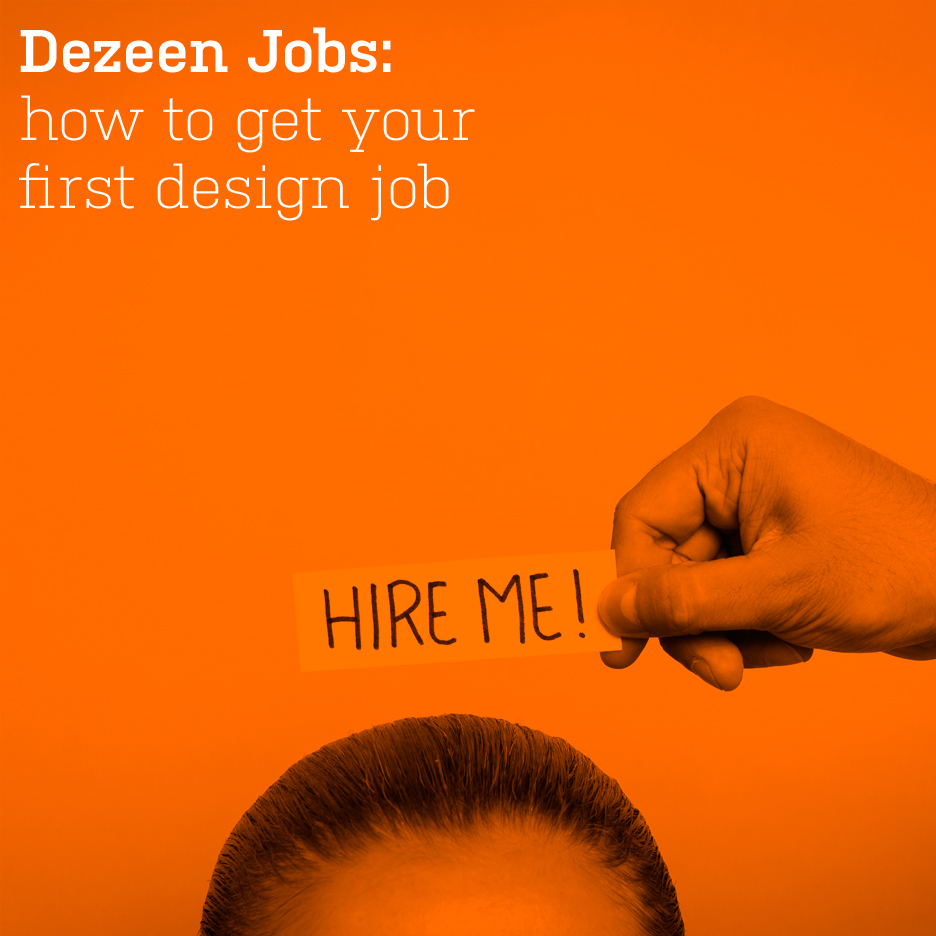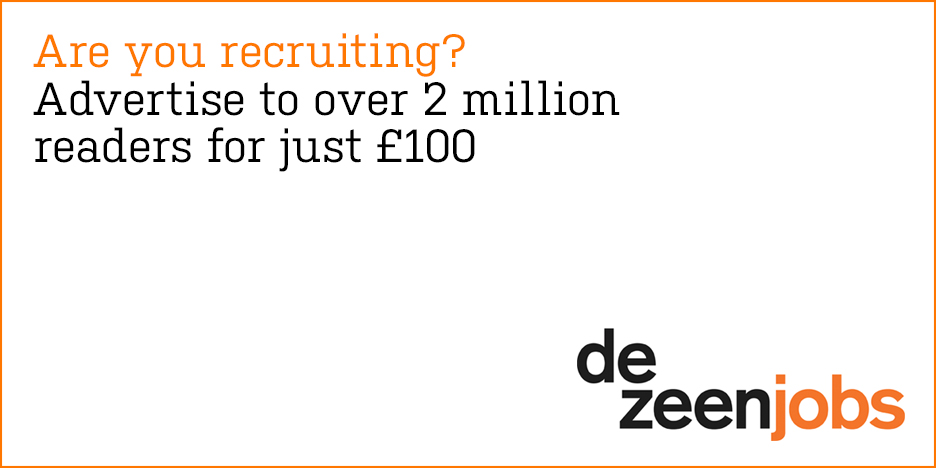
The Dezeen Jobs guide to getting your first job in the design industry
How can young designers break into the industry? In the first of a new series of careers-advice columns from Dezeen's recruitment platform Dezeen Jobs, Rob Bye offers some tips.
The most common questions I get asked by recent graduates are: How do I get a job? Are you hiring? Can you take a look at my portfolio? I'm going to share my practical answers.
But, before that, I want to give a quick overview of who I am. I graduated in Industrial Design from Brunel University in London, and got my first job working at Seymourpowell — one of the top design studios in London. I was approached by them after they saw my website, and was offered an internship without an interview.
After that, I worked as the chief design officer for a startup based in London and I'm now running my own design studio called Morrama, which I co-founded towards the end of last year. Within 2 years I went from applying to jobs, to hiring designers. We have recently employed a junior designer and received over 30 applicants for the position. All of this has given me a good insight into what you need to do to get a job.
Work out what you want to do
A lot of designers don't really know what area or discipline of design they actually want to work in. Are you interested in working in the design department for a large company, working in a large design consultancy, working in a small design studio, working in furniture design, etc? This question is crucial, as it will massively affect what type of work you are looking to get.
Many graduates assume the best thing to do is go straight into a junior designer position at the best company they can find. However if you're not 100 per cent sure, the best option is to look for short three- to six-month-long internships.
Internships allow you to jump between different jobs, in different fields, gaining experience in different types of design while being able to work out what you want to do long term. Best of all, this looks great on your CV as it will show varied work across different companies, whereas an endless trail of short-term junior designer positions will look as if you aren't committed – or even not wanted by the companies you worked for.
If you do know what you want to do, go for it! And get a job in a company that does exactly that.
Know what your portfolio actually is
Simply put, your portfolio will get you a job. And I don't mean just a print portfolio, but your portfolio of work as a whole, which will effectively define who you are as a designer and a person. Your website is your portfolio, your Twitter feed is your portfolio, your Instagram is your portfolio, your CV is your portfolio – literally everything an employer can find is your portfolio. It not only shows what you have done and how you work, but also how interested and immersed you are in design. So make sure everything aligns and looks good.
Having said that, there are two key parts of your portfolio that are easily the most important: Your print portfolio and your website. And you must have both. It's 2015, there is no excuse for not having a website, and it is one of the most important things for a designer. Services like Squarespace make it really easy to build an online portfolio that can be updated and tweaked continually. It is likely to be the first thing an employer sees, so make sure it looks great and is kept updated with your latest work. Be sure to get a custom domain and custom email as it will look so much more professional. People are much more likely to interview someone who has applied for a job using [email protected] instead of [email protected].
Make a great portfolio
Here are five top tips on how to make the most of your portfolio:
1. Treat it like a competition
Your portfolio will be compared to that of other designers, so it has to be better than everyone else's. You will be critically judged against your peers so your work has to stand out and catch the eye of the person viewing it. These days you must be competent at graphic design to be a great product designer.
2. Only show your best work
It's a well-known saying that you are only good as your worst project, so make sure you only put your very best work in there. Your top five projects are enough for an employer to get an idea of what you are like and what you can do. Rank your top five projects and then order them in this way — two, five, three, four, one. You want to start with something great, and end with something even better, as that will be the page that is left open on the table.
3. Show your process
You may have a beautifully designed product that can rival the output of top designers, however most companies (including ours) really care about how you got there. They want to see everything. Include images of user research, sketch development, early models, rough prototypes, CAD models, 3D prints, user interviews, development, testing. Basically, show what you did to get to your final design as this will allow the employer to see how you will work in their team.
4. Keep it quick and simple to read
We get so many portfolios where there is a vast amount of text that needs to be read to understand what is going on. And sadly we don't often have the time to read all of this. Design is a visual thing, so communicate your portfolio visually. Short paragraphs can be used, however annotated photos and diagrams are even better. I made this mistake myself and still need to go back and vastly cut down the essays I've written alongside some of my old projects online.
5. Show who you are
Talk about your hobbies, your interests and your thoughts on current design trends. You're applying to work for someone who you will see more than your family and flatmates, so tell them they want to know who you are. Show photos of other things you do outside of work, whether it is sport, art, photography or something else — put it in your portfolio. In summary, it has to show the employer exactly why they should hire you. Your work, your layout and your photos must be equally as good.
Get networking
I absolutely hate networking, however it is pretty important as most people really do get employed through a friend of a friend. Don't simply see it as a way to get a job. Get advice from recent graduates and other professionals on what skills you should improve upon, how to progress as a designer and what sort of fields you should look into. And, crucially, ask them to give feedback on your portfolio.
Have realistic expectations
Whenever you are applying for a job remember that you are young and very inexperienced. There is always so much to learn no matter how many years you've worked in design, but the difference between Uni work and real world work is vast. So don't act like you’re the best designer out there, but be confident in what you do and don’t know. It's completely fine to admit you don't have experience in certain areas, so long as you show you are more than willing to learn and improve. But most of all, don't expect to land a dream job at IDEO, Fuseproject or Frog straight away. Be prepared to spend time in smaller studios where you will probably have more opportunities to get involved in different types of work.
Stay positive
Design is a super competitive industry, so it's likely that you will get rejected a fair few times before landing your first job. And when this happens take it on the chin, work harder and don't be scared of failure. Keep working in your own time, improving your portfolio and building a better website. Keep doing more to put yourself in the best possible position and you will get a job eventually!
Rob Bye is co-founder of product design consultancy Morrama.
Dezeen Jobs is the world's most vibrant architecture and design jobs board. Check www.dezeenjobs.com for hundreds of international vacancies.
